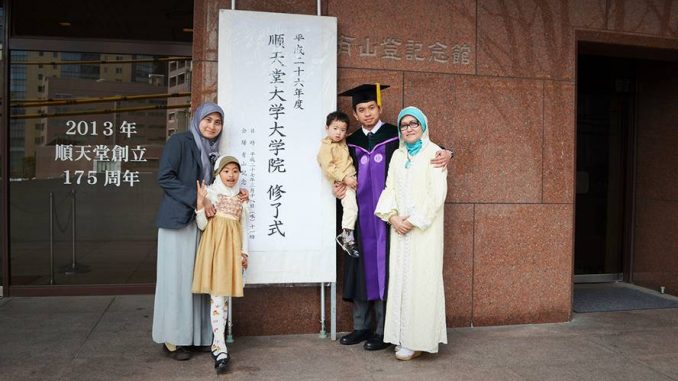
It is becoming clear that tumor consists of heterogeneous cells. These cells are different one to another in terms of their capacity to proliferate and to survive against cancer therapy, such as chemotherapy, radiotherapy and targeted therapy. The majority of the tumor cells are differentiated cells that comprise the bulk of the tumor and usually caused significant clinical symptoms. These cells are sensitive to cancer therapy, meaning they are easy to be killed by, for example, chemotherapy. This may explain why the tumor shrinks after cancer therapy and the patients are relieved from the disturbing symptoms.
But we may ask, ‘Why after, let say, 24 months, the tumor always come back even with the maintenance cancer therapy?’ One of the reasons is that cancer therapy did not kill the cancer stem cells (CSCs). These cells are resistant to cancer therapy. They survived against the pressure and lethal condition created by the cancer therapy. They have the capacity to generating new progeny that inherited their parent’s resistance to cancer treatment.
CSCs have distinguished markers in their body. These markers are unique because they are not highly expressed in the ‘regular’ tumor cells. We are interested in investigating who is responsible for the regulation of stem cells markers. We used lung cancer cell line, named A540 cells, and we stimulate them using growth factors: the transforming growth factor β (TGF-β) and tumor necrosis factor α (TNFα). These growth factors are known to be involved in the upregulation of CSCs markers. Our findings confirmed the efficacy of these growth factors in the upregulation of CSC markers, such as Oct4 and CXCR4. Next, we tried to silence the expression of CD44, a known CSC marker as well. Interestingly, silencing of CD44 reduced the expression of Oct4 and CXCR4 expressions.
Our preliminary findings provide the basis for future investigation of the role of CD44 in the regulation of CSC along with their complete features. We hope we could address the question whether CD44 are required in the capacity of lung cancer to survive against cancer therapy and to generate a tumor using a mice model.
INDONESIAN LANGUAGE VERSION
Peran CD44 dalam regulasi penanda sel punca kanker (cancer stem cell marker)
Kini makin jelas bahwa suatu tumor terdiri dari sel yang heterogen. Sel-sel tumor ini berbeda satu sama lain dalam kapasitasnya untuk berproliferasi dan bertahan mengahadapi terapi kanker, seperti kemoterapi, radioterapi dan terapi target. Mayoritas sel tumor merupakan sel yang berdiferensiasi yang mereka ini membentuk massa tumor dan menyebabkan keluhan pada penderita kanker. Namun sel yang berdiferensiasi ini juga sensitif terhadap terapi kanker, artinya mereka mudah dibunih oleh, misalnya, kemoterapi. Ini yang menjelaskan mengapa tumor bisa mengecil setelah terapi kanker dan pasien akan merasa gejalanya membaik.
Tapi kita juga bertanya-tanya, “Mengapa, misalnya, setelah 24 bulan tumor kembali muncul walaupun pasien sedang dalam pengobatan?” Salah satu penjelasannya adalah karena terapi kanker tidak mampu membunuh sel punca kanker (cancer stem cells, CSCs). Sel punca kanker ini sangat kebal terhadap terapi kanker. Mereka bisa bertahan menghadapi kondisi berat dan letal yang diciptakan oleh terapi kanker. Mereka juga memiliki kemampuan untuk tumbuh kembali membentuk keturunan baru yang juga kebal obat seperti sel punca kanker.
Sel punca kanker memiliki penanda yang berbeda pada tubuhnya. Penanda-penanda ini unik karena tidak diekspresikan pada tubuh sel tumor biasa. Kami tertarik menjawab pertanyaan siapa yang sebenarnya mengendalikan ekspresi penanda-penanda sel punca kanker ini. Pada penelitian kami, kami menggunakan sel A549, suatu sel tumor paru jenis adenokarsinoma, kami menstimulasi sel ini menggunakan dua growth factors yaitu transforming growth factor β (TGF-β) dan tumor necrosis factor α (TNFα). Kedua growth factors ini dikenal memiliki efek meningkatkan penanda-penanda sel punca kanker. Temuan kami mengkonfirmasi efektivitas kedua growth factors dalam meningkatkan ekspresi penanda sel punca kanker seperti Oct4 dan CXCR4. Berikutnya kami mencoba untuk menekan ekspresi CD44 menggunakan teknologi small interfering RNA. CD44 ini juga merupakan penanda sel punca kanker. Yang menarik adalah penekanan ekspresi CD44 berakibat penurunanan ekspresi Oct4 dan CXCR4 secara bersamaan.
Temuan awal kami ini menjadi dasar untuk penelitian lanjutan di masa depan tentang peranan CD44 dalam regulasi sel punca kanker beserta seluruh sifat-sifat mereka. Kami berharap dapat menjawab pertanyaan lanjutan yaitu apakah CD44 diperlukan untuk ketahanan hidup sel punca kanker menghadapi terapi kanker. Dan apakah CD44 diperlukan untuk membentuk tumor pada model mencit.
Reference:
Nurwidya F1, Takahashi F, Kato M, Baskoro H, Hidayat M, Wirawan A, Takahashi K. CD44 silencing decreases the expression of stem cell-related factors induced by transforming growth factor β1 and tumor necrosis factor α in lung cancer: Preliminary findings. Bosn J Basic Med Sci. 2017 Apr 24. https://dx.doi.org/10.17305/bjbms.2017.1966 [Epub ahead of print]
Leave a Reply